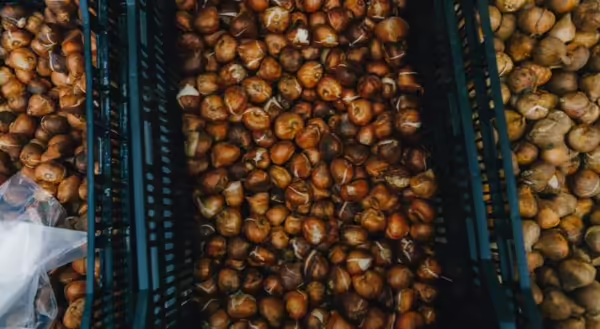
Give it a rest.
With outside temperatures cooling, many gardeners are ready to give their tools (and their body) a rest.
Although your gardening enthusiasm may be fading, preparation has just begun for another season of color: planting spring bulbs.
After a cold snowy winter, you will be glad you planted these botanical beauties, as they flood a barren landscape with color. Plant spring bulbs in late September through October to support strong root development before winter. Depending on the location, the first blooms (snowdrops) arrive in February followed by a parade of blooms through late June (alliums).
Bulb selection
Choose your bulbs wisely; they should be firm and free of rotting spots or signs of disease. Bulb size matters, a larger bulb will produce a larger bloom. To ensure the best selection, shop early in bulb planting season. Great selections can be found locally at garden centers or online at bulb retailer websites. Early shopping increases access to unique selections like snowdrops, camassia, alliums, and fritillaries.
Planting for visual impact
For the greatest visual impact in the landscape, plant bulbs in groupings or large drifts to create waves of color. Ensure healthy growth and good bloom development by planting in full sun (at least 8 hours of sun). A mixed border, filled with perennials and shrubs, is a great planting site. The border plantings will hide the fading bulb foliage, which should be left in place to replenish bulb nutrients as it dies back.
Spacing bulbs
When planting bulbs, bury them two to three times deeper than the length of the bulb, measured top to bottom, to ensure they survive the winter and grow properly in the spring. Organic matter such as compost or peat moss can be incorporated into the soil before planting to improve poor soil drainage. Many bulbs benefit from balanced fertilizer (20-20-20) which can be added at planting time.
Bulb care
Tend to a planted bulb like any other new planting. Water bulbs after planting to settle them in the soil and to initiate root development. Continue to water weekly (if conditions are dry) until the ground freezes. After planting, add a 2-inch layer of mulch, which helps minimize soil temperature fluctuations in winter and conserves soil moisture.
Protection from pests
To prevent pesky squirrels and chipmunks from digging up freshly planted bulbs, cover the planting area with chicken wire, hardwire mesh, or plastic garden mesh, then mulch. If fertilizing at planting, avoid natural options like fish emulsion or bone meal with smells that attract animals. Digging critters can detect when their favorite bulbs are planted; avoid planting sweet-tasting favorites like tulips and crocus. Plant daffodils, alliums, scilla, or hyacinths, if squirrels and chipmunks are problematic.
Bulbs for containers
If gardening with limited space, plant your bulbs in a large container this fall—the bulbs can overwinter outside in the pot—and come spring, you will have a bright, welcoming garden space right outside your door. For a full season of blooms, plant bulbs in layers like lasagna in a well-draining container: place the largest bulbs on the bottom of a pot, add 2 inches of potting soil, then add a midsized layer of bulbs. Continue layering bulbs and soil (3 – 4 layers) to create a pot that will grow with color all season. For additional seasons of interest, create an evergreen arrangement in the container this winter.
Photo Credit: Tulip bulbs by Vincent Wachowiak
ABOUT THE AUTHOR: Brittnay Haag is a Horticulture educator with University of Illinois Extension, serving Livingston, McLean, and Woodford Counties. Her work focuses on youth horticulture education, specifically through school gardens and Jr. Master Gardener programs. Brittnay provides leadership for three county Master Gardener programs and is responsible for developing community programs and providing expertise in horticulture and environmental sciences.